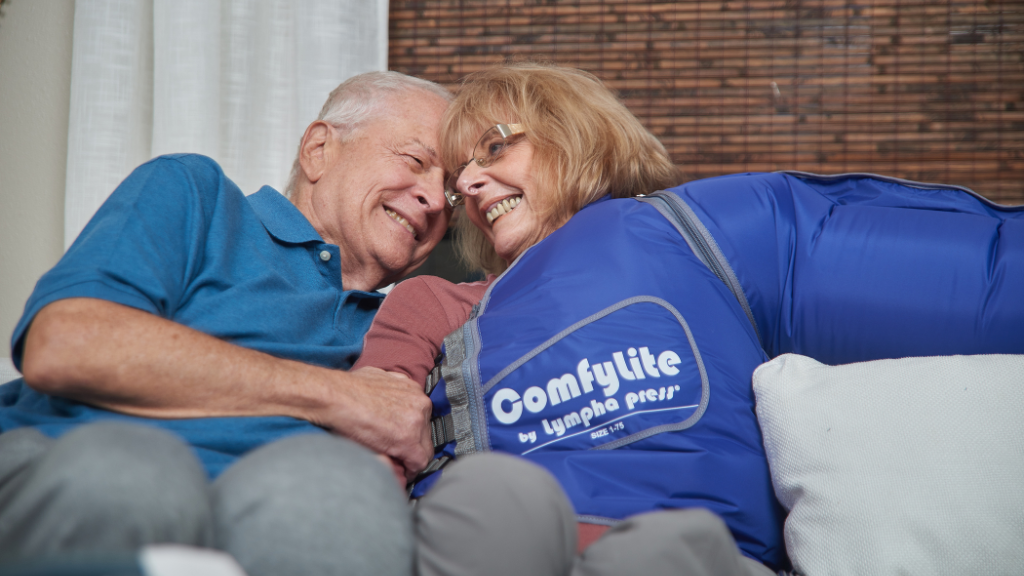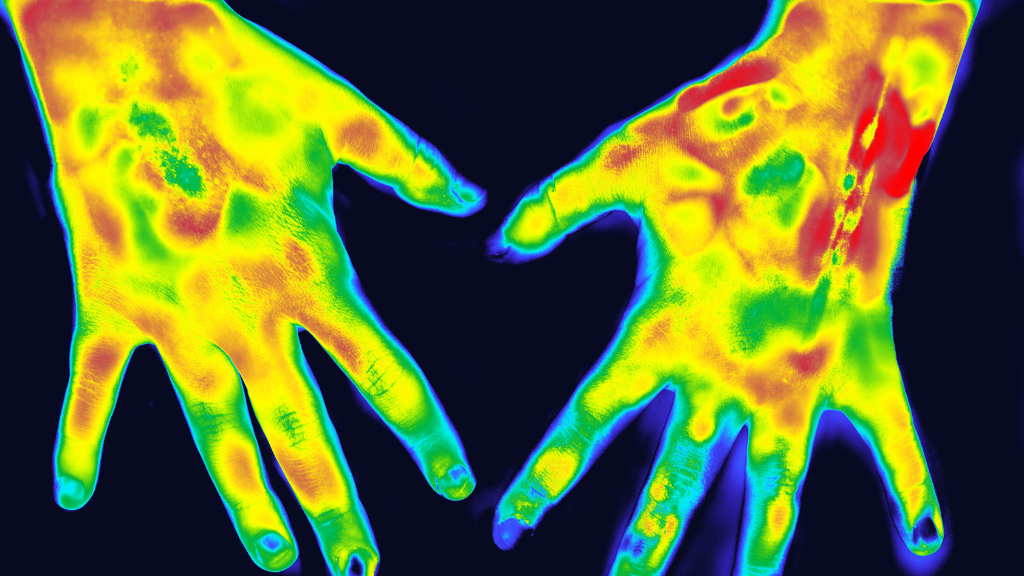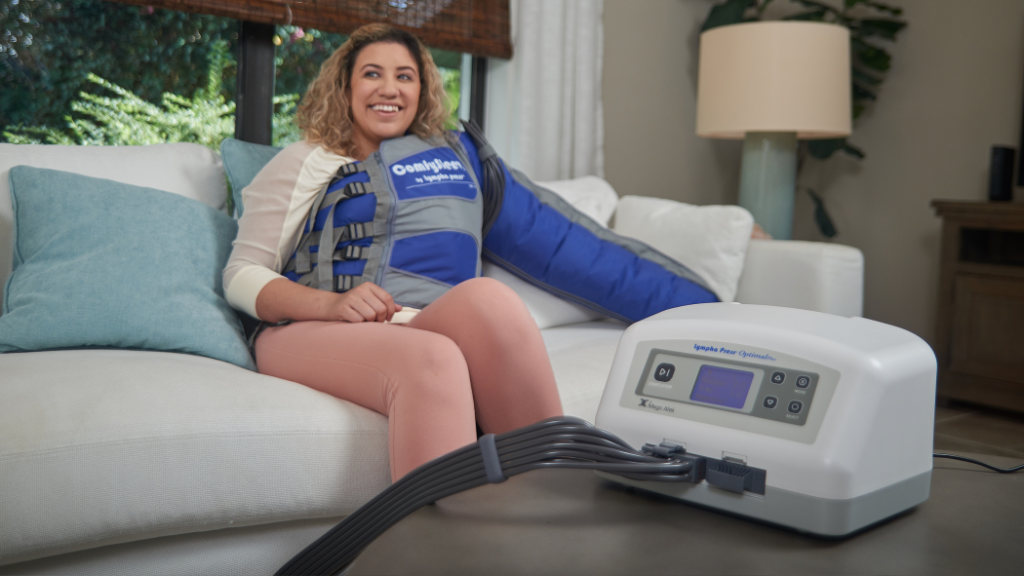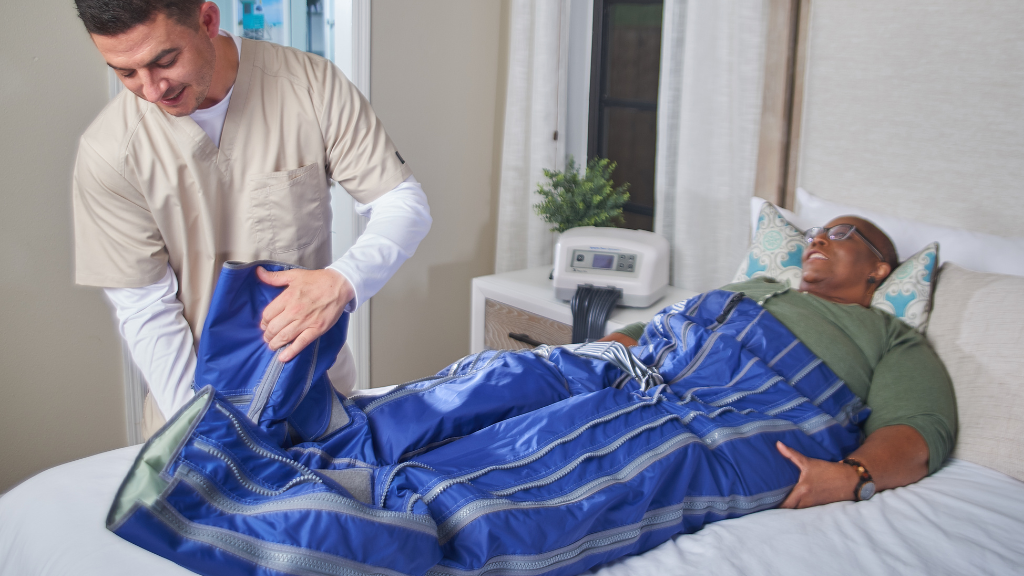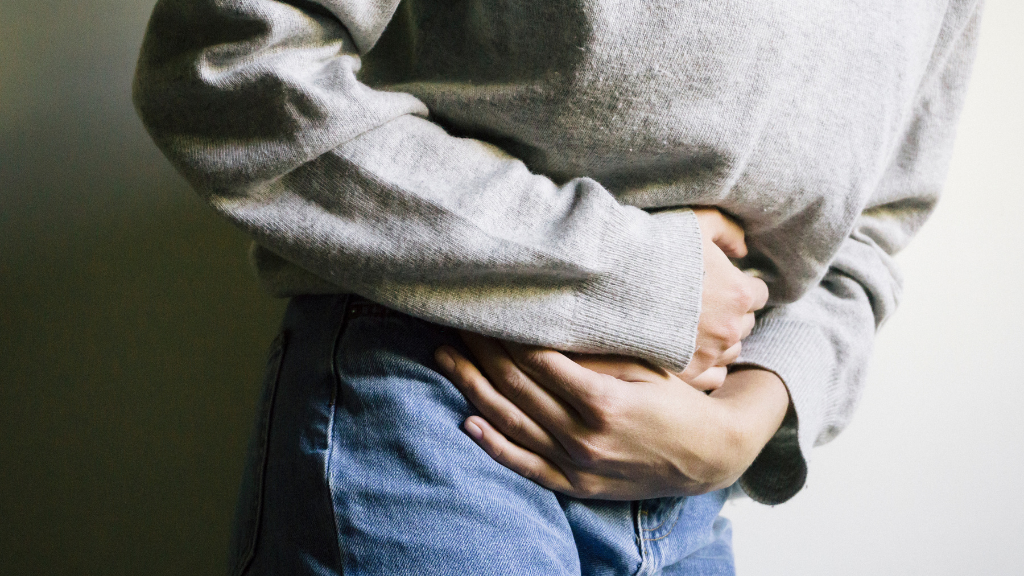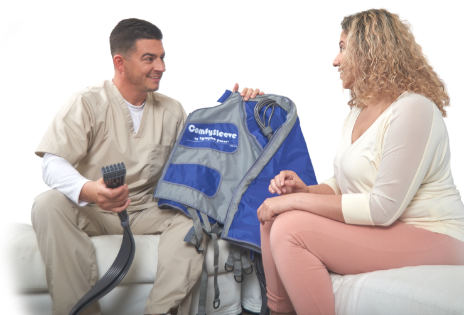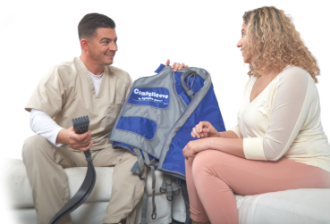This is a 5-minute read.
New research shows compelling evidence that compression therapy is an effective treatment for breast cancer-related lymphedema of the thorax. Patients and healthcare providers can confidently incorporate compression therapy into lymphedema treatment options after breast cancer.
Below is a summary of three clinical case studies showing impressive results for using compression in patients following breast cancer lumpectomy who experienced severe thoracic radiation damage. To understand the relevant background information about lymphedema in general, please refer to the article “Why are Some People Walking Time Bombs for Developing Lymphedema?”
The three patients described below had previously experienced ongoing lymphedema symptoms despite receiving 28 days of complete decongestive therapy (CDT) and conservative at-home treatment. In the study, their compression therapy involved using a Lympha Press compression garment at home over a 3 to 4-week period.
Overall, their positive results included decreased arm and thoracic swelling, less pain, softer tissue, and significantly improved functional arm range of motion. Patients also reported feeling less hardness and tightness within the breast.
Read the full case study here: Advanced Pneumatic Compression for Treatment of Breast Cancer-Related Lymphedema of the Thorax.
Case 1: 48-Year-Old Woman With Left Breast Lumpectomy
The first case involved a 48-year-old woman who was 27 months post-left breast lumpectomy and 23 months post-radiation treatment. Despite almost a year of treatment at a lymphedema clinic, she still had symptoms including pain, swelling, and restricted movement.
Previously, she used another pump for at-home treatment, but it wasn’t snug enough for effective compression and wasn’t providing pain relief or reduced swelling. The clinician ordered a Lympha Press pump and Lympha Press half jacket garment.
The patient primarily used the Wave, or peristaltic, setting on the device. This setting is very comfortable for the upper extremity and torso and provides dedicated treatment to torso/axillary areas (trunk and armpit).
After her course of Lympha Press treatment concluded, the patient reported significantly reduced pain and better shoulder movement. The clinicians noted an improvement in her axillary cording. Continued treatment resulted in measurably decreased left arm edema. The patient ultimately reported a pain level that decreased from 5 out of 10 to zero.
Case 2: 44-Year-Old Woman With Intense Left Breast Pain
The second patient was a 44-year-old woman who was 20 months post-breast cancer treatment. A full 28 days of CDT and at-home treatment had made little progress. She started the study with a pain level of 7 out of 10 plus severe hardness and swelling in her left breast.
This patient used the Lympha Press concurrently with a quilted cherry pit breast compression pad according to her doctor’s recommendation. She used the Wave treatment mode, focusing on the axilla and breast.
Her results included a marked reduction in her left arm and thoracic circumference measurements. She reported a reduction in her pain level from 7 out of 10 to a much lower 2, and her breast tissue was noticeably softer.
Case 3: 59-Year-Old Woman With Rigid Surgical Incision
The third patient is an example that shows the impact of Lympha Press on a long-term rigid surgical incision with radiation damage. This patient was more than two years post-lumpectomy and had a large area of hardened fibrosis.
Although her pain had already been reduced to a 4 out of 10 with CDT and at-home therapy, she hoped for progress in terms of her hardened skin and limited range of motion. For the study, she primarily used Wave mode and titrated pressure to maintain comfort while achieving progress.
This patient reported a reduction in her arm and breast volume, with results lasting several days after each use. She felt she no longer needed to use her compression sleeve everyday and rated her resulting pain as a zero to 1 out of 10.
Summary and Additional Information
These three patients experienced positive outcomes for symptoms of truncal and breast edema using Lympha Press. To learn more about using this type of compression therapy for breast cancer-related lymphedema, please view the 5-minute video “The Optimal Choice for Post-Mastectomy Lymphedema Patients.”
Lympha Press addresses lymphedema symptoms by improving lymphatic fluid flow within the body. Clinicians and patients with concerns about breast cancer-related lymphedema treatment should consider effective Lympha Press therapy options. These products offer significant lymphedema symptom relief with results that are backed by clinical studies.
